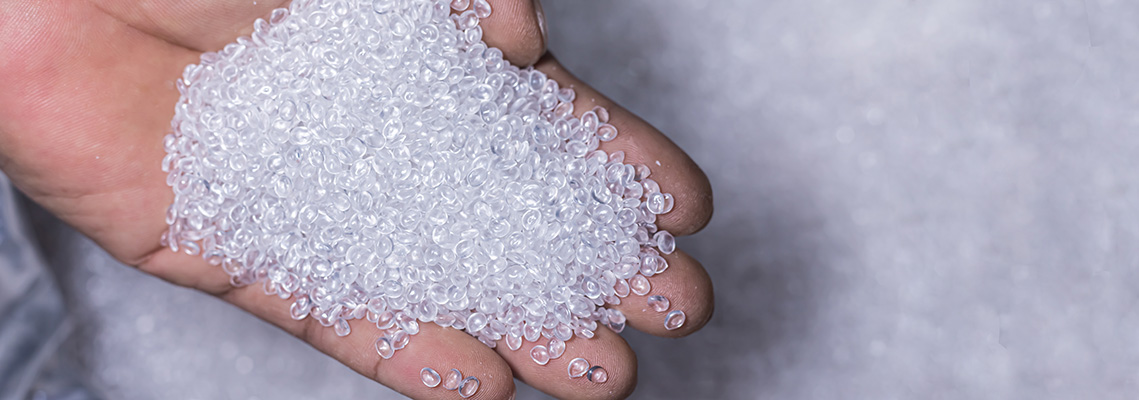PP – Polypropylene

Physical and Mechanical Properties
With 0.90-0.91 g/cm³, normal PP is a very light semi-crystalline thermoplastic from the class of polyolefins. PP has good toughness and excellent fatigue bending strength with suitably thin cross-sections. Compared to homopolymer PP, copolymer PP also has particularly good notched impact strength and is therefore also suitable for technical applications. The creep strength decreases sharply with increasing temperature. PP is water-repellent (hydrophobic), like most polyolefins. In terms of hardness and strength, semi-crystalline PP follows the upper range of semi-crystalline HD-PE and closes the gap to semi-crystalline PA 6. With new types of catalysts (metallocenes, etc.), properties are achieved during production that cover the entire range of harder thermoplastic elastomers (TPE) well into the range of PA 6.
Optical and Chemical Properties
Natural-coloured PP is transparent, but not crystal clear. With decreasing wall thickness, PP mouldings become more transparent. Random copolymers are almost crystal clear for thin-walled mouldings. PP mouldings have a non-polar surface that is only attacked by a few chemicals. PP is resistant to aqueous salt solutions, acids and alkalis. It is resistant to alcohols, solvents up to approx. 60°C and to washing lyes. It swells on contact with halogenated hydrocarbons, at elevated temperatures also on contact with fats, oils and waxes. PP can be painted with suitable polyurethane and acrylic-based paints.
Resistance to weather and ageing
PP is sufficiently resistant to irradiation in the visible range. UV radiation causes oxidation of the surface of PP mouldings and therefore leads to brittleness and disintegration. Suitable colouring, e.g. with carbon black, stabilises but reduces the heat ageing resistance. The addition of suitable UV stabilisers (HALS*) can sufficiently stabilise the outdoor applicability of PP mouldings with any colouring for decades.
*) = HALS (English -hindered amine light stabilizer) do not absorb UV radiation, but inhibit polymer degradation by continuous and cyclic removal of radicals generated by photooxidation of the polymer.
Special settings – product areas
Glass fibres and other strength-increasing fillers, various stabilisers, conductive materials to improve electrical conductivity, admixture of PP-based elastomeric thermoplastics (TPO) for softer and tougher settings – storage and transport containers, covers, fan wheels, furniture fittings, housings for electrical appliances.
Thermal properties
The continuous service temperature of unreinforced PP without mechanical stress is approx. -40 to 110°C. Unreinforced PP can also withstand temperatures of up to 140°C for short periods. Ignition occurs from approx. 330°C. PP burns with a weakly luminous flame with a faint waxy odour and drips off burning.
Physiological and joining behaviour
PP is tasteless, odourless and skin-friendly, provided that no additives are used that could be harmful to health. Some manufacturers also certify food compatibility. Due to the good chemical resistance resulting from the polar moulded part surfaces, only pressure-sensitive adhesives can be used. For this purpose, the moulded part surface must be roughened and primed. The former can also be achieved by scarfing and corona discharge. PP can be joined by hot plate, friction, vibration or hot gas welding.
Example of use
Construction: Garden furniture, toilet seats, artificial grass, furniture hinges, etc.
Miscellaneous: Spectacle cases, (tool) cases, school bags, sterilisable medical equipment, rubbish bins, laundry baskets, children’s toys.
At b-plastic, the following product groups, among others, are manufactured from PP: